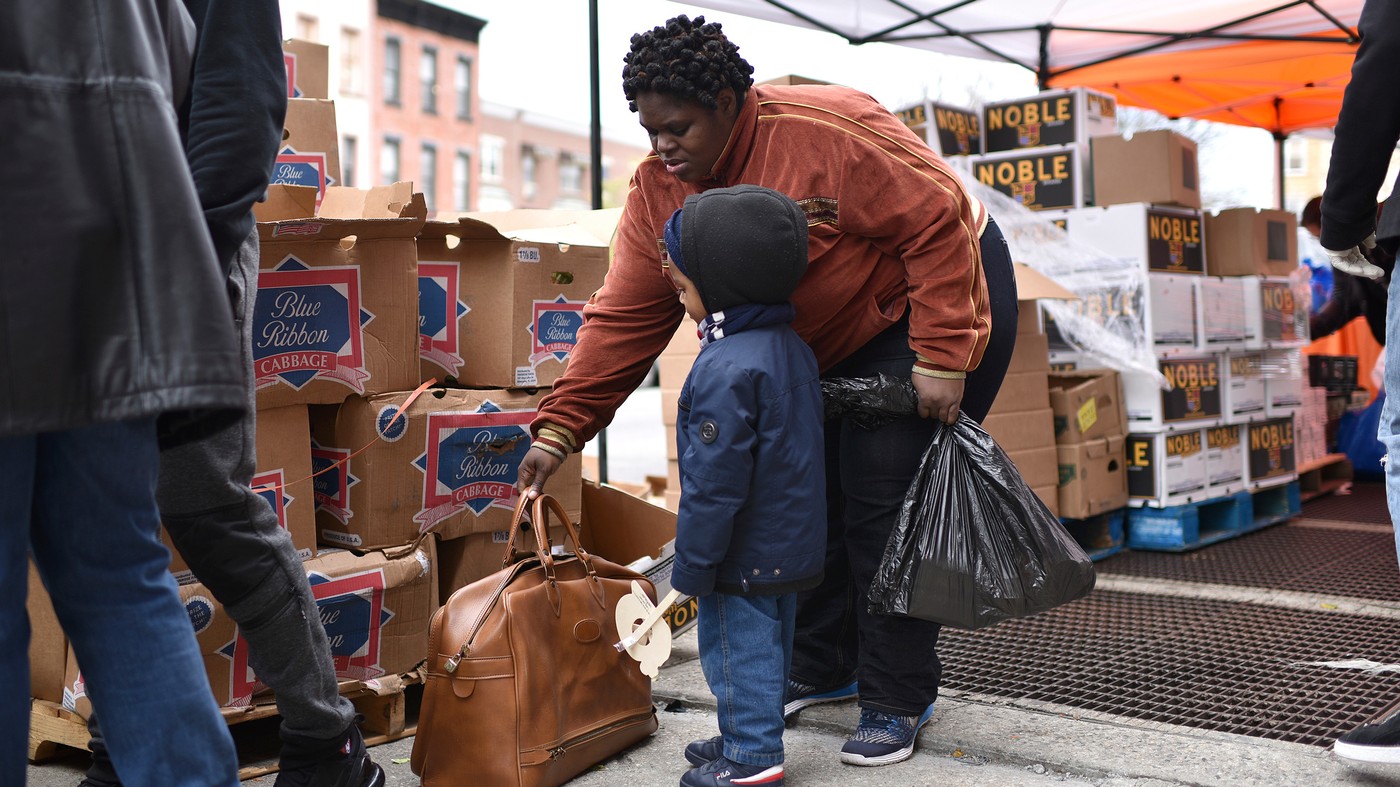American Children Are Going Hungry in the Coronavirus Pandemic
Rates of food insecurity among kids have reached “an extent unprecedented in modern times.”

By Emma Ockerman May 6 2020
Young children in the U.S. are currently being crushed by an unprecedented hunger crisis during the coronavirus pandemic. Almost one in five households with kids under 12 reported struggling with food insecurity last month, according to a new study out Wednesday.
Utilizing data from two surveys — the COVID Impact Survey and The Hamilton Project/Future of the Middle Class Initiative Survey of Mothers with Young Children — a fellow at the Brookings Institute found that rates of food insecurity among kids have reached “an extent unprecedented in modern times.”
“This is alarming,” Lauren Bauer, a Brookings fellow in economic studies, told the New York Times. “These are households cutting back on portion sizes, having kids skip meals. The numbers are much higher than I expected.”
The Survey of Mothers with Young Children found that 17.4% of mothers with kids younger than 12 reported their kids weren’t eating enough because they couldn’t afford food last month. The rate represents a quadrupling from 2018 data, and it’s nearly three times higher than the level of hunger reported among kids during the Great Recession, Bauer said.
Last month, Feeding America warned that 18 million kids could go hungry during the coronavirus pandemic, given the staggering job loss that’s forced families to enter miles-long lines for food banks. The organization noted that the country’s previous high was during the worst of the recession in 2009, when 17.2 million kids went hungry. Approximately 1 in 4 kids could suffer this time around, Feeding America said, especially since many schools — a lifeline for poor kids — are closed to prevent the virus’ spread.
Before the pandemic hit, 37.2 million Americans dealt with food insecurity, including 11.2 million children. Even in normal times, many affected households struggle to feed themselves with government benefits offered through the Supplemental Nutrition Assistance Program (SNAP), colloquially referred to as food stamps. The Brookings Institute suggested Wednesday that the government rapidly expand maximum SNAP benefits by at least 15%. Democrats have called for a similar expansion in recent weeks, though they’ve been unsuccessful in clinching it so far.
“New nationally representative surveys fielded since the pandemic began show that rates of food insecurity overall, among households with children, and among children themselves are higher than they have ever been on record,” Bauer wrote in a post about her research Wednesday. “Food insecurity represents an urgent matter for policymakers in the capitol and in statehouses across the country.”
Cover: A woman and her child pick from a selection of donated food at the "Bed-sty Campaign Against Hunger" food pantry in the New York City borough of Brooklyn, NY, April 14, 2020. As millions lose their jobs due to the coronavirus pandemic, food insecurity for many has become a real issue. (Anthony Behar/Sipa USA)(Sipa via AP Images)
This article originally appeared on VICE US.
Nearly 1 in 5 US children left hungry since virus crisis: study
 AFP / ANDREW CABALLERO-REYNOLDSChildren pick up free lunch in Arlington, Virginia on March 16, 2020, after schools closed due to coronavirus. Disrupted school lunch programs could be a factor in alarming rises in hunger among US children since the outbreak began, the study says
AFP / ANDREW CABALLERO-REYNOLDSChildren pick up free lunch in Arlington, Virginia on March 16, 2020, after schools closed due to coronavirus. Disrupted school lunch programs could be a factor in alarming rises in hunger among US children since the outbreak began, the study says
Nearly a fifth of young children in the United States are not getting enough to eat since the coronavirus pandemic erupted, according to research out Wednesday highlighting the broader health impact of the crisis.
The Brookings Institution report said a survey found that 17.4 percent of mothers with children aged 12 or under reported that their offspring were not eating enough due to lack of money.
"It is clear that young children are experiencing food insecurity to an extent unprecedented in modern times," said lead researcher Lauren Bauer.
"Food insecurity in households with children under 18 has increased by about 130 percent from 2018 to today," she added.
The survey to measure the consequences of the COVID-19 pandemic uncovered figures worse than during the financial crisis of 2008.
Bauer described the results as "alarming," telling the New York Times that households were cutting back on portion sizes and kids were being forced to skip meals.
Disrupted school meal programs could also be factor, she said, with families not collecting meals from distribution sites and older siblings competing for limited supplies at home.
Bauer called for the government to increase food security programs and boost benefit levels.
At least 30 million American workers have lost their jobs in the economic shutdown imposed to thwart the spread of the virus.
The April employment report, due out Friday, is expected to show the jobless rate soaring -- perhaps as high as 20 percent -- reaching levels not seen since the Great Depression last century.
The new coronavirus has infected nearly 1.2 million people in the United States and killed around 72,000, and analysts fear some of the economic damage may be long-term.
No comments:
Post a Comment